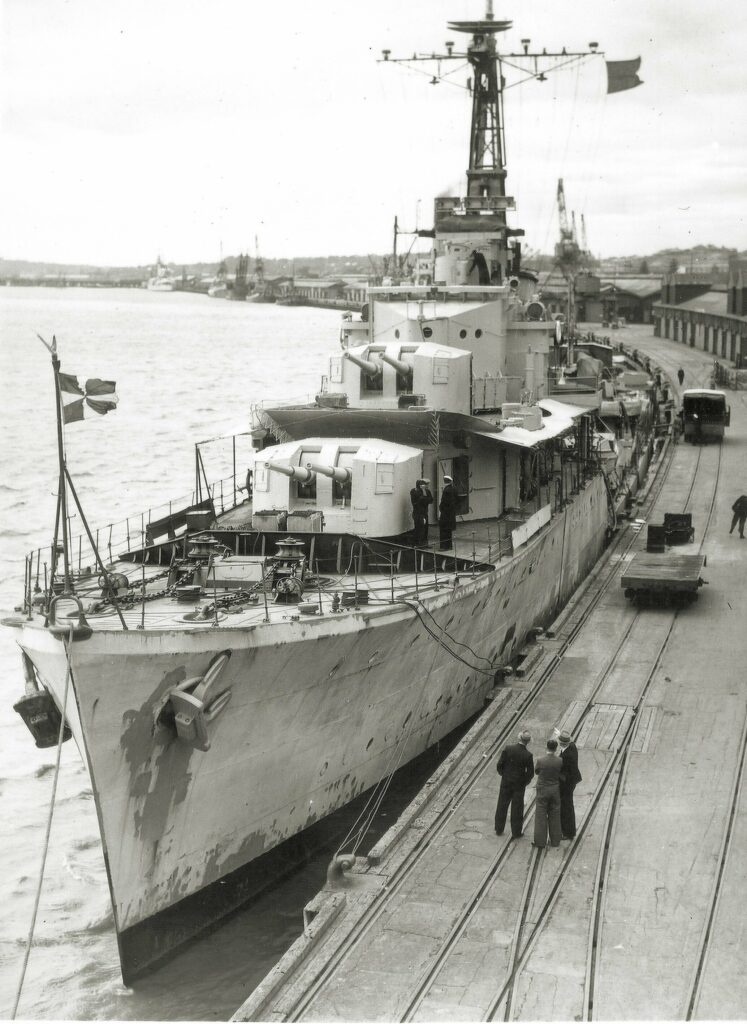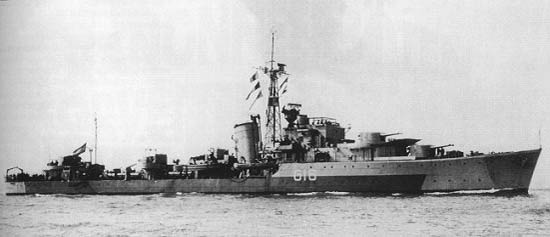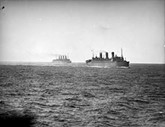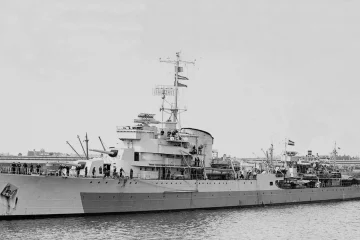
The HNLMS Van Galen and Tjerk Hiddes were N-class destroyer built as HMS Noble and HMS Nonpareil for the Royal Navy during the Second World War and transferred to the Royal Netherlands Navy shortly after completion.
The tender price for the Van Galen was £400,684 excluding the cost of Admiralty supplied equipment. The ship was launched on 17th April 1941 and commissioned into service as HM Neth. Ship Van Galen on 11th February 1942.
During World War II, both ships were involved in various operations. It joined the 7th Destroyer Flotilla and participated in convoy escort duties, including escorting military convoys from the Atlantic to the Indian Ocean. They also took part in operations in the Indian Ocean, including convoy defence and planned operations with the Eastern Fleet.

The destroyers moved to Fremantle in October 1942 along with the Dutch cruiser Tromp . With this transfer to Western Australia, the Dutch ships left the Eastern Fleet area and came to the American-led Southwest Pacific area. The Australian cruiser Adelaide and the Jacob van Heemskerck , the sister ship of the Tromp , later joined the fleet stationed in Fremantle . Together they secured Australian coastal traffic.

In February 1943 the Dutch ships secured the convoy “Pamphlet” with the return of 30,000 men from the 9th Australian Division from Suez to Melbourne and Sydney. They secured the convoy with the troop carriers Queen Mary (80,774 GRT), Aquitania (45,647 GRT), Île de France (42,050 GRT), Nieuw Amsterdam (36,287 GRT) and the auxiliary cruiser Queen of Bermuda (22,575 GRT).
The Tjerk Hiddes also played a significant role in the evacuation of personnel from Timor. The island was strategically important, and as the Japanese forces advanced, many Allied personnel were trapped on the island. These troops stayed there as a guerrilla force and attacked the Japanese and also gathered intelligence information that was send back to the Allied Forces.
In November 1943 she undertook a series of operations to evacuate personnel from Timor and bring them to safety. She made three trips to Darwin, carrying approximately 950 people during this operation. These personnel were individuals who had managed to avoid capture by the Japanese forces.
The evacuation of personnel from Timor was a challenging and dangerous task. The ship faced the constant threat of enemy attacks, both from the air and at sea. However, its efforts were successful in rescuing a significant number of individuals and bringing them to a safer location.
In 1944, they both returned to the Eastern Fleet and took part in fleet screening duties and air operations in the Indian Ocean. They also participated in operations to support the US landings at Leyte. In November 1944, the ship was nominated for return to Home waters and was deployed in the SW Approaches for convoy defence.
After the war, the Van Galen served in the Dutch East Indies until 1948. It then underwent a refit and was deployed with the UN naval force off Korea between 1951 and 1952. The ship later served for training duties in European waters before being placed in Reserve in 1953. In 1957, the Van Galen was sold for demolition and arrived at a Dutch shipbreaker’s yard in February of that year.
Tjerk Hiddes resumed peace time service with the Royal Netherlands Navy after completion of the refit at Dundee. She returned to the Dutch East Indies, and was transferred to newly independent Indonesia in March 1951. She was renamed RI Gadjah Mada and became the flagship of the Indonesian Navy.
See also:
van Galen: Naval History .net
Tjerk Hiddes: Wikipedia


